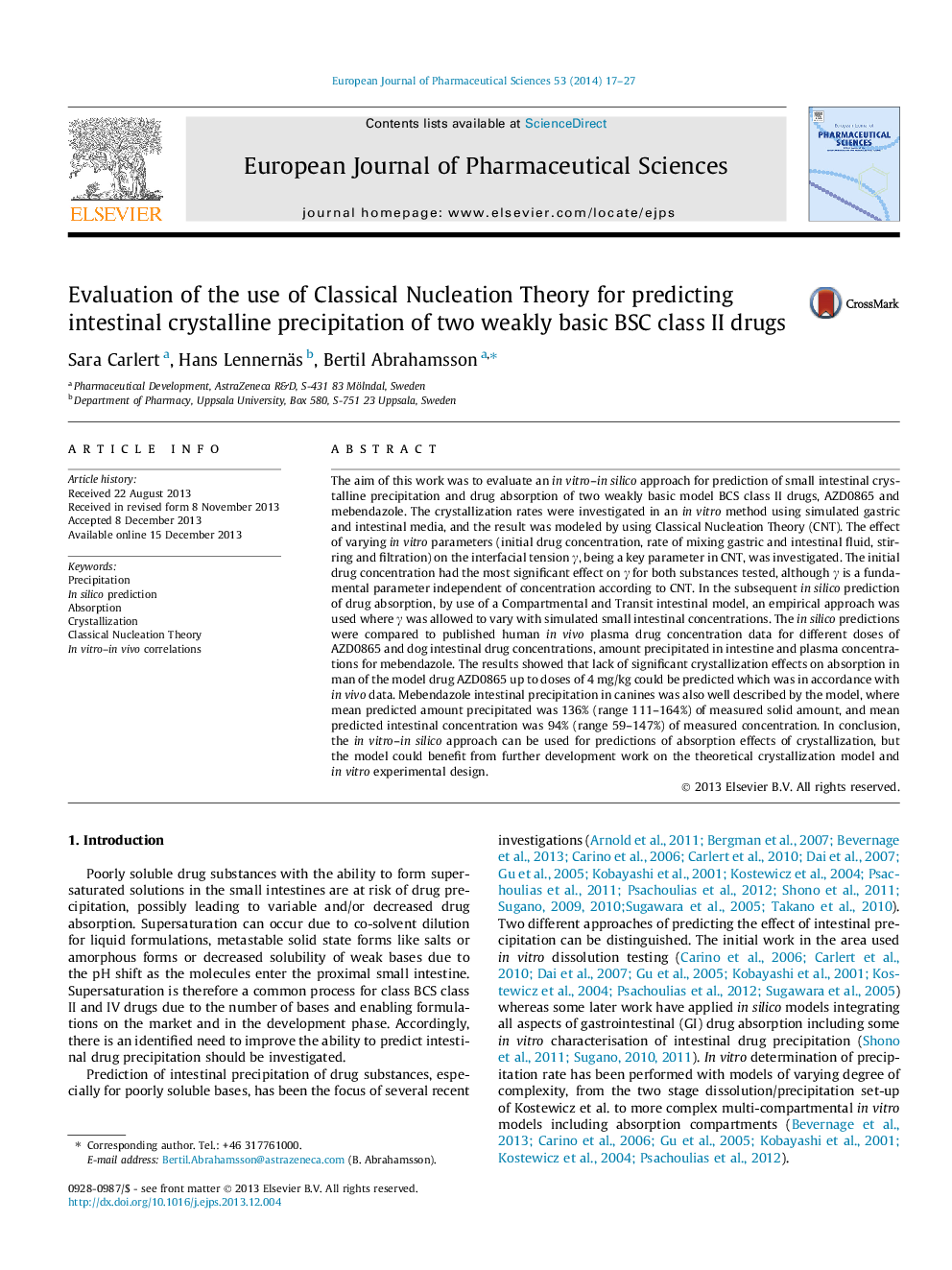| کد مقاله | کد نشریه | سال انتشار | مقاله انگلیسی | نسخه تمام متن |
|---|---|---|---|---|
| 2480578 | 1556197 | 2014 | 11 صفحه PDF | دانلود رایگان |

The aim of this work was to evaluate an in vitro–in silico approach for prediction of small intestinal crystalline precipitation and drug absorption of two weakly basic model BCS class II drugs, AZD0865 and mebendazole. The crystallization rates were investigated in an in vitro method using simulated gastric and intestinal media, and the result was modeled by using Classical Nucleation Theory (CNT). The effect of varying in vitro parameters (initial drug concentration, rate of mixing gastric and intestinal fluid, stirring and filtration) on the interfacial tension γ, being a key parameter in CNT, was investigated. The initial drug concentration had the most significant effect on γ for both substances tested, although γ is a fundamental parameter independent of concentration according to CNT. In the subsequent in silico prediction of drug absorption, by use of a Compartmental and Transit intestinal model, an empirical approach was used where γ was allowed to vary with simulated small intestinal concentrations. The in silico predictions were compared to published human in vivo plasma drug concentration data for different doses of AZD0865 and dog intestinal drug concentrations, amount precipitated in intestine and plasma concentrations for mebendazole. The results showed that lack of significant crystallization effects on absorption in man of the model drug AZD0865 up to doses of 4 mg/kg could be predicted which was in accordance with in vivo data. Mebendazole intestinal precipitation in canines was also well described by the model, where mean predicted amount precipitated was 136% (range 111–164%) of measured solid amount, and mean predicted intestinal concentration was 94% (range 59–147%) of measured concentration. In conclusion, the in vitro–in silico approach can be used for predictions of absorption effects of crystallization, but the model could benefit from further development work on the theoretical crystallization model and in vitro experimental design.
Figure optionsDownload high-quality image (145 K)Download as PowerPoint slide
Journal: European Journal of Pharmaceutical Sciences - Volume 53, 12 March 2014, Pages 17–27